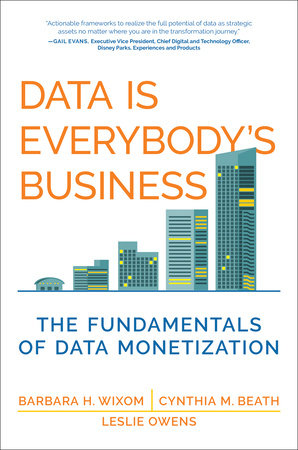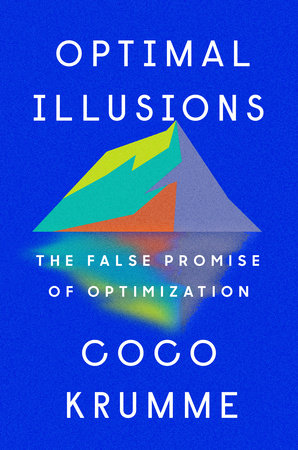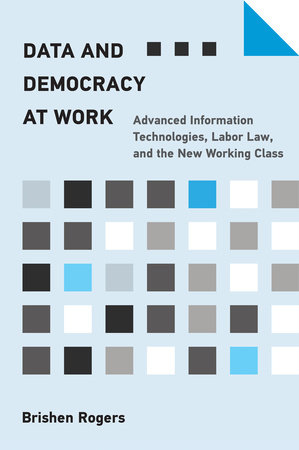Quick Summary
One Sentence Summary
“Data Is Everybody’s Business” by Barbara H. Wixom, Cynthia M. Beath, and Leslie Owens explores how to democratize data within an organization, empowering every employee to effectively use data for better decision-making and innovation.
Big Idea
The central theme of the book is the democratization of data in the workplace. It emphasizes how fostering a data-driven culture enhances organizational performance by enabling every team member, regardless of their role, to access and utilize data effectively.
Five Key Ideas
- Data Literacy: The importance of educating all employees in data literacy to make informed decisions.
- Data Accessibility: Strategies for making data easily accessible across different departments.
- Data Governance: Implementing policies for data management and security to maintain quality and compliance.
- Data-Driven Culture: Building a workplace culture that values data-driven insights over intuition or hierarchy-based decisions.
- Technology and Tools: Leveraging modern tools and technologies to facilitate data democratization and analytics.
Actionable Advice
- Educate and Train: Invest in regular training programs to enhance data literacy across the organization.
- Implement User-Friendly Tools: Choose data analytics tools that are intuitive and can be easily used by employees with varying levels of technical expertise.
- Foster Collaboration: Encourage cross-departmental collaboration to share insights and data practices.
- Promote Data Responsibility: Teach employees about data ethics and the importance of maintaining data privacy and security.
About the Author
Barbara H. Wixom, Cynthia M. Beath, and Leslie Owens are renowned experts in the field of data analytics and information systems. They bring a wealth of experience from academia and industry, providing practical insights into data management and analytics.
Read Next
- “The Data Warehouse Toolkit” by Ralph Kimball: For a deeper understanding of data warehousing principles.
- “Data Science for Business” by Foster Provost and Tom Fawcett: Offers insights into how data science can be applied in business contexts.
- “Weapons of Math Destruction” by Cathy O’Neil: Explores the dark side of data analytics and the ethical implications of data misuse.
In Depth
Data Literacy: Empowering Every Employee
Data literacy is not just a skill for data scientists or IT professionals; it’s a crucial competency for everyone in today’s data-driven world. “Data Is Everybody’s Business” emphasizes this point strongly. It argues that empowering every employee with data literacy skills is key to unlocking an organization’s full potential.
The book illustrates this through the concept of ‘data democratization’. This means making data accessible to all levels of an organization, allowing everyone to make data-driven decisions. But accessibility alone isn’t enough. Employees need the skills to understand and interpret this data correctly.
One detailed example from the book involves a retail company. The company implemented a data literacy program that trained staff across departments, from sales to HR, in basic data analysis and interpretation skills. This initiative led to remarkable improvements. Sales staff began identifying trends and patterns in customer purchases, leading to more effective inventory management and targeted marketing strategies. HR could analyze employee performance data, helping them better understand workforce dynamics and improve employee satisfaction.
The authors state, “In the data-driven age, the ability to navigate through and interpret the sea of data becomes an essential part of every job description.” This quote encapsulates the book’s philosophy: data literacy is not optional but a fundamental skill that every employee must possess.
The book suggests practical steps for improving data literacy. It starts with leadership commitment. Leaders must recognize the value of a data-literate workforce and invest in training and resources. Then, tailor the training to different roles within the organization. A marketing professional, for instance, needs to understand customer data analytics, while a production manager might need to focus on operational data.
Another critical aspect is creating a supportive environment where employees feel comfortable using data. This includes providing the right tools that are user-friendly and fit the unique needs of different departments. It also means fostering a culture where questions and curiosity about data are encouraged, and where data-driven insights are valued and acted upon.
The book also stresses the importance of continuous learning. Data literacy is not a one-time training but a continuous process. As the data landscape evolves, so should the skills and knowledge of the employees.
In summary, the first key idea of “Data Is Everybody’s Business” is that data literacy should be a universal competency within an organization. The example of the retail company demonstrates the transformative impact of this approach. As the authors succinctly put it, navigating and interpreting data is now an essential part of every job, making data literacy an indispensable skill in the modern workplace.
Data Accessibility: Making Data Available to All
Data accessibility is about breaking down the silos that often keep valuable data locked away in specific departments. It’s about ensuring that everyone in the organization, regardless of their role, can access the data they need to make informed decisions.
A pivotal example in this regard involves a healthcare organization. This organization transformed its operations by implementing a centralized data system. Previously, patient records and medical data were scattered across different departments, making it challenging for healthcare providers to access complete patient histories. By centralizing data, they ensured that every healthcare professional, from doctors to administrative staff, had access to comprehensive patient information. This change improved patient care quality and operational efficiency.
The authors highlight the importance of this approach: “Data accessibility is not just about having data; it’s about having the right data at the right time.” This quote underscores that it’s not just the volume of data that matters, but its relevance and timeliness.
To achieve data accessibility, the book suggests several strategies. First, organizations should assess what data they have and what is needed by different departments. This assessment helps in creating a comprehensive data map that guides the data accessibility strategy.
Next, there’s the technical aspect. Implementing a robust IT infrastructure is crucial. This might include cloud-based systems that allow secure and easy access to data from anywhere. Data management tools that can handle large volumes of data efficiently are also essential.
Another important aspect is the user interface. The systems should be user-friendly, allowing employees with varying degrees of technical expertise to access and use the data without needing extensive training.
Additionally, the book talks about the importance of data governance. This involves setting up policies and procedures to ensure that data is used responsibly and ethically. It’s about making sure that while data is accessible, it’s also protected and compliant with legal and ethical standards.
Finally, the book stresses the need for continuous evaluation and improvement of data accessibility strategies. As the organization grows and the data landscape changes, the strategies need to adapt to ensure they remain effective.
In essence, data accessibility is about ensuring that the right people have the right data at the right time. It’s about removing barriers and creating a data-rich environment where informed decision-making is the norm. The example of the healthcare organization vividly illustrates the transformative power of making data accessible to all. As the authors put it, accessibility is not just about the quantity of data but its relevance and availability when it matters most.
Data Governance: Ensuring Quality and Compliance
Data governance is crucial. It’s about setting the rules of the game for data management. It ensures data quality, security, and compliance with legal standards, which is vital in a world where data breaches and misuse can have serious consequences.
An example in the book involves a financial services firm. This firm faced challenges with data inconsistencies and security vulnerabilities. By implementing a robust data governance framework, they established clear policies for data quality, access control, and compliance. This move not only enhanced data security but also improved the reliability of the data used for decision-making. As a result, they saw a significant reduction in compliance issues and an increase in trust among their clients.
The authors make a compelling point: “Effective data governance is not about restricting data access, but about managing data responsibly.” This quote reflects the balance that needs to be struck between accessibility and control.
To implement effective data governance, the book suggests starting with a clear understanding of the regulatory environment relevant to the industry. This understanding helps in setting up the right compliance standards.
Next, it’s essential to establish clear data policies. These policies should define who can access what data, how data is to be used, and the processes for data quality control. It’s not just about setting the rules; it’s also about ensuring that these rules are understood and followed by everyone in the organization.
Another critical aspect is the technology for enforcing these policies. This includes tools for data encryption, access control, and auditing. Technology plays a vital role in automating compliance and ensuring that governance policies are consistently applied.
Training and awareness are also key components. Employees should be educated about the importance of data governance and their role in maintaining it. They need to understand the consequences of data breaches and the importance of adhering to governance policies.
The book also talks about the role of a data governance committee. This committee, typically comprising members from different departments, is responsible for overseeing data governance strategies, addressing data-related issues, and ensuring that governance policies are up-to-date and effective.
In conclusion, data governance is about managing data in a way that is responsible and compliant. It’s a critical component of a data-driven organization, as it ensures the integrity and security of the data. The financial services firm example illustrates how effective governance can transform an organization, making it more secure and reliable. As the authors aptly put it, it’s about managing data responsibly, not restricting its access.
Data-Driven Culture: Valuing Insights Over Intuition
Creating a data-driven culture is about shifting the mindset of an organization. It’s about moving from decisions based on gut feelings or hierarchical authority to decisions grounded in data-driven insights. This cultural shift is key to unlocking the full potential of data in any organization.
The book presents a compelling example involving an e-commerce company. This company, previously driven by traditional marketing strategies, shifted to a data-driven approach. By analyzing customer data, they were able to personalize marketing campaigns, resulting in a significant increase in customer engagement and sales. The change was not just in the strategies but in the mindset of the employees. Decisions were no longer just ‘top-down’ but involved insights derived from data at every level.
The authors put it succinctly: “In a data-driven culture, data is not just a tool; it is the foundation of decision-making.” This quote highlights the paradigm shift in how decisions are made in such a culture.
To foster a data-driven culture, the book suggests several strategies. Firstly, it starts with leadership. Leaders must not only advocate for a data-driven approach but also lead by example. They should use data in their decision-making processes and encourage others to do the same.
Secondly, there needs to be accessibility to data. Employees at all levels should have access to relevant data and the tools to analyze it. This accessibility empowers them to contribute insights and ideas based on data.
Another crucial factor is training. Employees need to be trained not just in data analysis but in understanding the value of a data-driven approach. They should be encouraged to ask questions, challenge assumptions, and seek data to back up their proposals.
Recognition and rewards also play a role. When employees make data-driven decisions that lead to positive outcomes, they should be acknowledged and rewarded. This reinforcement helps in embedding the data-driven approach in the organizational culture.
Furthermore, communication is key. Success stories where data-driven decisions led to positive outcomes should be shared across the organization. This sharing not only educates but also motivates others to adopt a similar approach.
Finally, it’s about continuous improvement. A data-driven culture is not static. It needs to evolve with changing data landscapes and business environments. Regular feedback and adjustments ensure that the culture remains relevant and effective.
In essence, building a data-driven culture is about changing the way decisions are made and valued in an organization. The example of the e-commerce company illustrates how this cultural shift can lead to tangible business outcomes. As the authors assert, in such a culture, data is the foundation of decision-making, changing the very fabric of how an organization operates and succeeds.
Technology and Tools: Enabling Data Democratization
The right technology and tools are essential in democratizing data. They make data accessible, understandable, and actionable for everyone in the organization, regardless of their technical expertise.
A standout example from the book involves a manufacturing company. This company adopted a suite of user-friendly analytics tools that allowed employees on the production floor to monitor and analyze production data in real-time. This capability led to a more agile response to production issues, increased efficiency, and a significant reduction in downtime. Employees who had little to no background in data analysis were suddenly able to contribute valuable insights, thanks to the intuitive nature of these tools.
The authors emphasize the importance of this approach: “In the quest for data democratization, the choice of technology and tools is not just about capability but also about usability.” This quote highlights that the effectiveness of data tools is as much about their user-friendliness as their technical capabilities.
To choose the right technology and tools, the book suggests focusing on several key aspects. First, consider the user experience. Tools should be intuitive and easy to use, with a minimal learning curve. This accessibility ensures that all employees can use them, not just those with technical backgrounds.
Next, look at integration capabilities. The tools should be able to integrate seamlessly with existing systems and data sources. This integration is crucial for ensuring that data is up-to-date and comprehensive.
Scalability is another important factor. As the organization grows and its data needs evolve, the tools should be able to scale accordingly. This scalability prevents the need for frequent tool changes, which can be costly and disruptive.
Data security is also a critical consideration. The tools should have robust security features to protect sensitive data and ensure compliance with data protection regulations.
Additionally, the book advises on the importance of support and training. Employees should have access to training on how to use the tools effectively. Ongoing support is also necessary to address any issues or questions that arise.
Finally, it’s about continuous evaluation and improvement. The data landscape is constantly evolving, and so should the tools. Regular reviews and updates ensure that the tools remain effective and aligned with the organization’s needs.
In conclusion, the right technology and tools are crucial in making data accessible and usable for everyone in the organization. The example of the manufacturing company demonstrates how user-friendly tools can empower employees at all levels to engage with data effectively. As the authors point out, in the journey towards data democratization, the usability of technology is as important as its capability, bridging the gap between data and decision-making.
Actionable Advice
-
Invest in Training: Regularly conduct data literacy programs to enhance employees’ ability to interpret and utilize data effectively.
-
Choose User-Friendly Tools: Select intuitive data analytics tools that can be easily used by all employees, regardless of their technical expertise.
-
Promote Collaboration: Encourage sharing of data insights and practices across different departments to foster a data-driven culture.
-
Emphasize Data Responsibility: Educate employees about data ethics, privacy, and security to ensure responsible data usage.
-
Leadership by Example: Leaders should actively use data in their decision-making to inspire a data-driven approach throughout the organization.
-
Accessible Data Policies: Implement clear and effective policies for data accessibility, ensuring all employees have the data they need.
-
Regularly Update Data Strategies: Continuously evaluate and update data strategies to keep pace with technological advancements and changing business environments.
-
Foster a Supportive Environment: Create a culture where questions and curiosity about data are encouraged, and data-driven insights are valued.
-
Recognize and Reward Data-Driven Success: Acknowledge and reward employees who make impactful decisions based on data analysis.
About the Author
Barbara H. Wixom is a prominent figure in the world of data analytics and business intelligence. She boasts an impressive academic background, having served as a principal research scientist at MIT Sloan Center for Information Systems Research. Wixom’s expertise lies in big data and business analytics, where she has contributed significantly through research and teaching. She is known for her focus on how organizations can effectively use data for competitive advantage and improved decision-making.
Cynthia M. Beath, a retired professor from the University of Texas at Austin, has a rich history in researching information systems. Her work primarily focuses on the strategic use of IT in organizations and how it transforms businesses. Beath is well-regarded for her insights into IT management practices and the alignment of IT with business strategies.
Leslie Owens operates at the intersection of technology and business as an executive director at MIT Sloan Center for Information Systems Research. Her work revolves around digital data and its impact on modern businesses. Owens emphasizes the importance of data-driven decision-making in contemporary business environments.
Collectively, their beliefs center on empowering organizations through data, advocating for data democratization, and promoting a culture of informed decision-making.
Read These Next
You might like these similar books
- “The Data Warehouse Toolkit” by Ralph Kimball
- “Data Science for Business” by Foster Provost and Tom Fawcett
- “Weapons of Math Destruction” by Cathy O’Neil
- “Big Data: A Revolution That Will Transform How We Live, Work, and Think” by Viktor Mayer-Schönberger and Kenneth Cukier
- “Data-Driven: Creating a Data Culture” by Hilary Mason and DJ Patil
FAQ
Q: What is the main focus of “Data Is Everybody’s Business”?
A: The book focuses on democratizing data within organizations, enabling every employee to effectively use data for decision-making and innovation.
Q: Who are the authors of the book?
A: The book is written by Barbara H. Wixom, Cynthia M. Beath, and Leslie Owens.
Q: What can I learn from this book?
A: You can learn about the importance of data literacy, strategies for data accessibility, data governance, creating a data-driven culture, and the use of technology and tools in data democratization.
Q: Is this book suitable for people without a background in data science?
A: Yes, it is written in a way that is accessible to readers with various levels of expertise, including those without a background in data science.
Q: How does the book suggest implementing data democratization?
A: The book suggests practical strategies like investing in employee data literacy, implementing user-friendly data tools, and fostering a collaborative, data-responsible culture.
Q: Does the book provide real-world examples?
A: Yes, it includes detailed examples from various industries to illustrate the implementation of its key ideas.







